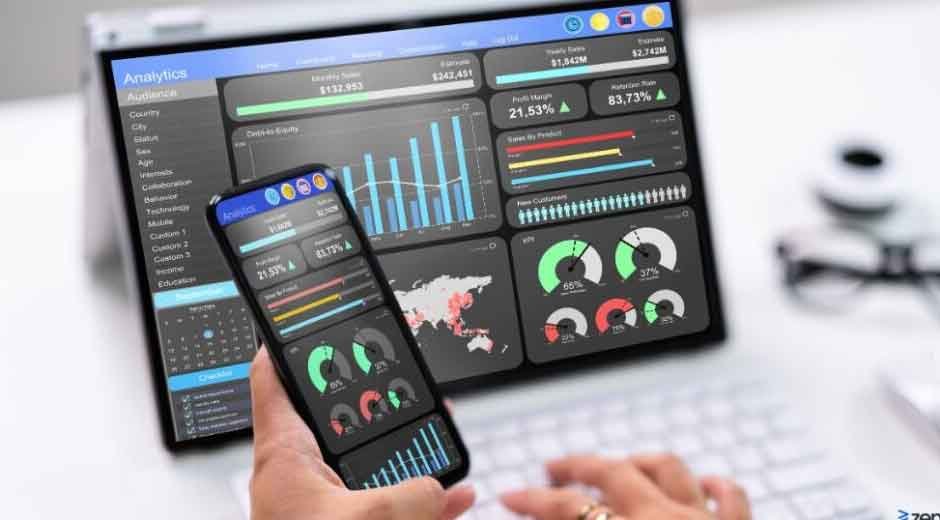Training operators in complex industrial environments has always been challenging. Traditional methods often rely on theoretical knowledge and static documentation, leaving gaps between classroom learning and real-world application. Real-time dashboards are transforming this landscape by providing dynamic, data-driven training experiences that accelerate learning and improve operational outcomes.
These sophisticated visualization tools offer immediate feedback, contextual learning opportunities, and performance insights that traditional training methods simply cannot match. By integrating real-time data into training programs, organizations can create more effective, engaging, and measurable learning experiences for their operators.
The Challenge with Traditional Operator Training
Conventional training approaches face several limitations. Classroom-based instruction often lacks the immediate relevance that operators need to understand complex processes. Static manuals and presentations cannot adapt to changing conditions or provide personalized feedback based on individual performance.
Furthermore, traditional methods struggle to demonstrate cause-and-effect relationships in real-time environments. Operators may understand theoretical concepts but lack the practical experience to apply them effectively when facing unexpected situations or process variations.
The disconnect between training environments and actual operational conditions creates additional challenges. Operators trained on simplified scenarios may feel unprepared when confronting the complexity and variability of real-world operations.
How Real-Time Dashboards Transform Training
Real-time dashboards revolutionize operator training by providing immediate access to live data, trends, and system performance indicators. These tools create immersive learning environments where trainees can observe actual process behaviors and understand the immediate impact of their decisions.
Interactive Learning Experiences
Modern dashboards enable interactive training scenarios where operators can manipulate variables and instantly see results. This hands-on approach accelerates understanding of complex relationships between different process parameters. Trainees gain confidence by practicing with real data while working in controlled training environments.
The visual nature of dashboards makes complex information more accessible. Charts, graphs, and visual indicators help operators quickly identify patterns, anomalies, and trends that might be difficult to recognize in raw data or text-based reports.
Immediate Feedback and Correction
Real-time feedback is perhaps the most powerful aspect of dashboard-based training. When operators make decisions or adjustments, they can immediately see the consequences reflected in the dashboard metrics. This instant feedback loop reinforces learning and helps build intuitive understanding of process dynamics.
Supervisors and trainers can monitor trainee performance through the same dashboards, providing targeted guidance and correction when needed. This collaborative approach ensures that learning gaps are addressed promptly and effectively.
Key Benefits of Dashboard-Driven Training
Enhanced Engagement and Retention
Visual, interactive training experiences typically generate higher engagement levels compared to traditional methods. Operators remain more focused when working with dynamic, colorful displays that respond to their actions. This increased engagement translates to better information retention and faster skill development.
The gamification potential of dashboards adds another layer of engagement. Training programs can incorporate challenges, achievements, and progress tracking that motivate operators to continue learning and improving their skills.
Accelerated Learning Curves
Dashboard-based training significantly reduces the time required for operators to reach competency levels. By providing immediate context and feedback, these tools help trainees understand complex concepts more quickly than traditional methods allow.
New operators can observe experienced colleagues’ decision-making processes through shared dashboards, learning best practices through observation and mentorship. This peer-learning approach complements formal training programs.
Improved Safety and Risk Management
Real-time dashboards excel at highlighting safety-critical information and potential risks. During training, operators learn to recognize warning signs, understand safety protocols, and practice emergency response procedures using actual system data.
This approach is particularly valuable in industries where safety is paramount, such as chemical processing, pharmaceuticals, and manufacturing. Organizations specializing in life science consulting often recommend dashboard-based training specifically for its safety benefits and regulatory compliance advantages.
Data-Driven Performance Assessment
Traditional training assessment relies heavily on subjective evaluation and theoretical testing. Dashboard-based training provides objective, measurable performance data that can be analyzed to identify strengths, weaknesses, and areas for improvement.
Training managers can track progress over time, compare performance across different operators, and identify patterns that inform future training program improvements. This data-driven approach enables more targeted and effective training strategies.
Implementation Best Practices
Successful dashboard implementation requires careful planning and consideration of user needs. Start by identifying the most critical information that operators need to perform their jobs effectively. Avoid overwhelming trainees with too much information initially.
Design dashboards with intuitive layouts and clear visual hierarchies. Use consistent color schemes, fonts, and symbols throughout the interface to reduce cognitive load and improve usability.
Provide adequate support and resources during the transition period. Even the best-designed dashboards require some adjustment time, and ongoing support ensures successful adoption.
Regular feedback collection from operators helps identify areas for dashboard improvement and ensures that the training tools continue meeting evolving needs.
Measuring Training Success
Establish clear metrics for evaluating training effectiveness before implementing dashboard-based programs. Common indicators include time-to-competency, error rates, safety incidents, and operator confidence levels.
Compare performance outcomes between operators trained using traditional methods versus dashboard-based approaches. This comparative analysis demonstrates the value of investment in new training technologies and guides future training decisions.
Transforming Operator Excellence Through Technology
Real-time dashboards represent a significant advancement in operator training methodologies. By providing immediate feedback, visual learning experiences, and data-driven insights, these tools address many limitations of traditional training approaches.
Organizations that embrace dashboard-based training typically see improvements in operator competency, safety performance, and overall operational efficiency. As technology continues advancing, the gap between traditional and modern training methods will only widen, making early adoption a competitive advantage.
The investment in dashboard-driven training pays dividends through improved operator performance, reduced errors, enhanced safety outcomes, and ultimately, better business results. Consider piloting a dashboard-based training program in your organization to experience these benefits firsthand.










